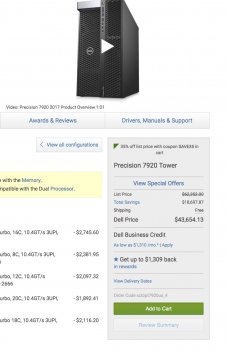Using the T2 should take care of that, should it not?
No. The T2's SSD implementation hooks up to the CPU's chipset ( In Intel's terminology the PCH platform control hub). It just looks like a NVMe SSD to the rest of the system. It will look like a NVMe SSD to AMD CPU+chipset also. If there are issues with AMD's NVMe interface implementation they will still be present when interfacing with a T2.
The question though would be whether AMD had problems with all NVMe implementations or just some drives. If it is just some drives then there would be a pretty good chance they'll fix anything on next iteration that had problems with T2's implementation if Apple was waving a 'fat' contract in front of them.
The T2 has some System Management chip (SMC) duties also (and likewise if hooked to the Intel PCH's SMC interface ). Whatever customizations were required there also would need to be done. But probably not particularly much different as Intel's interface evolves/evolved.
[doublepost=1555352366][/doublepost]
...
That's raised my question. Apple have access to Radeon graphics business, I wonder why Apple don't touch any Ryzen / Threadripper chips for their Macs.
Several reasons.
1. Scale. AMD doesn't have top to bottom offerings over the last several years that were all better or at least highly competitive with Intel's offerings. Not just CPU products but firmware and implementation support. AMD was behind the curve on that across a number of products. ( the vast majority of their design wins were all in areas where price sensitive. How many high end laptops design wins do they even have now at this point ? )
2. Fabrication. Intel is in the dumps over last 2 years , but previous to that AMD lagged significantly. The GPUs that Apple has gotten over last 4-5 haven't been bleeding edge fabricated implementations. [ e.g., some GPUs with better perf/W ratios would have come in handy for the MacPro 2013 upgrade. Instead the baseline of the D300/Pitcairn went stale for years and upscale just got bigger and hotter so both were no-ops as good moves ) . Also quantity. The CPUs only just shifted away from GlobalFoundary (ex AMD fabs ) contracts. Apple wanting to dial up/down parts is easier to do in Intel's bigger customer pool.
3. Thunderbolt. AMD didn't put much effort into that. Again it is a boot/firmware implementation support issue. ( Intel has been key Apple partner in moving Lightpeak -> Thunderbolt -> Thunderbolt USB Type C 'merge' ). Thunderbolt's future folded into USB IF means AMD probably won't be sitting on outside going forward, but they don't having anything substantive right now ( or over last year or so ).
AMD has had a track record of shooting themselves in the foot. Last 1-2 years they haven't, but is that an aberration or had they turned the corner for a long run. Versus Apple sticking with the vendor they knew and hoping they sort out the potholes they had fallen into.
plot twist : Apple go slowly full ARM and abandon both blue and read team (hints : Marzipan Project)
If anything, Marzipan is about supporting multiple CPU stacks not just one. There are some what appear to be misguided characterizations that point to Marizpan being some variations on emulation. Everything Apple has explicitly said so far (last WWDC 2018) points to compile/build to platform as being part of the process.
If there is a narrow transition ( i.e., onto just thinnest, lightest laptops ) then 'abandon' is probably questionable.


